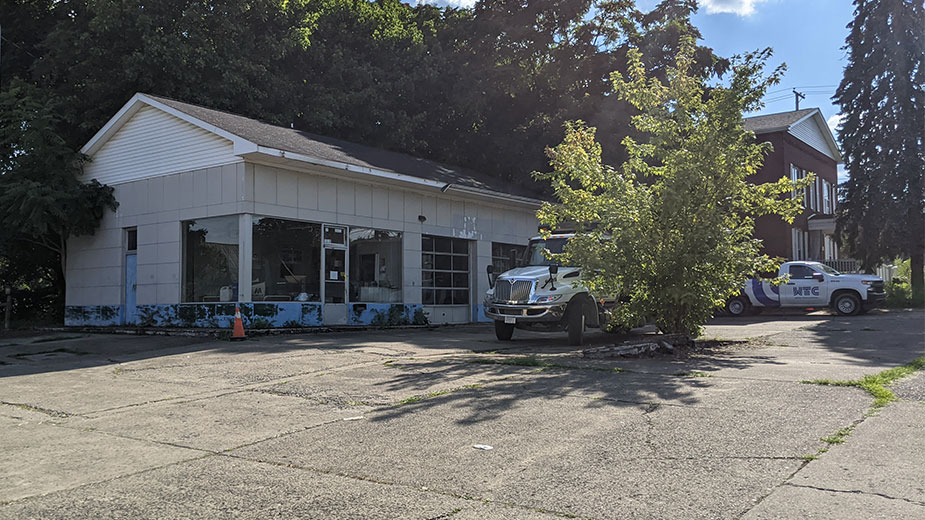Ohio Outlines Plan to Handle Eclipse Travelers, Offers Tips
COLUMBUS, Ohio – The Buckeye State will be ready for an influx of visitors for the April 8 total solar eclipse.
Gov. Mike DeWine this week directed all state departments and agencies to be prepared to ensure the safety of all Ohioans and visitors before, during and after the eclipse.
The Ohio Emergency Management Agency is coordinating the state’s preparation and response to the event.
Only 21 total solar eclipses have crossed the lower 48 states during the existence of the United States of America. The last total solar eclipse visible in Ohio was in 1806, and the next total solar eclipse will not pass through Ohio until 2099.
The event is expected to draw hundreds of thousands of visitors to the state, resulting in heavy traffic and slowdowns on interstate and secondary highways.
Travelers are urged to arrive early and stay late to avoid the heaviest traffic. Additional preparedness resources are available at eclipse.ohio.gov, and events surrounding the eclipse can be found at ohio.org/eclipse.
State agencies and departments outlined their plans and offered tips for those who will travel through the state before and after the eclipse.
Advice for Travelers
The Ohio EMA urges those traveling to see the eclipse to make a preparedness kit for their vehicle and include items like snacks, drinks, cash, cellphone chargers and blankets.
Motorists should top off their fuel tank or fully charge their electric vehicle before heading out.
It’s also a good idea to have a family communication plan to ensure you know how to reconnect in case you get separated from friends or family at a large gathering. Make sure children have contact information for parents or guardians with them.
Finally, the EMA asks travelers to be aware of weather conditions and where to seek shelter in the event of severe weather.
The Ohio Emergency Management Agency’s Solar Eclipse site includes important safety information and other frequently asked questions about viewing the eclipse in Ohio.
The Ohio Department of Transportation will be fully staffed before, during and after the eclipse to assist with traffic control. The agency is treating the solar eclipse like a major travel holiday by restricting roadwork and reducing the size of active work zones as much as possible to accommodate the extra traffic.
Highways Will Be Congested
Roads are expected to be congested before the eclipse as travelers begin to arrive at their viewing locations. However, the worst traffic congestion is expected to happen after the event is over as everyone tries to head home at the same time.
Travelers can find traffic alerts, construction zone locations and more than 1,100 live traffic cameras on OHGO.com and the OHGO app.
Due to the potential for cellphone service interruptions, travelers are urged to have a paper map with them to assist with navigation.
On the Ohio Turnpike, lane closures, typically set for construction work zones and other maintenance projects, will not be permitted prior, during or after the eclipse.
Like planning for peak travel days throughout the year, the Ohio Turnpike will be staffed by personnel providing roadside assistance to stranded motorists 24 hours a day. The Ohio Turnpike’s toll booths, 14 service plazas and eight maintenance buildings will be staffed in anticipation of a high-volume traffic event.
Portable message signs will be placed at various locations along the toll road to keep travelers informed about traffic incidents and driving conditions, or to provide other roadway safety messages.
Participating restaurants at the Ohio Turnpike’s service plazas will extend their hours of operation and increase staffing and supplies. Gasoline and diesel fuel deliveries will also be increased.
For more information, visit ohioturnpike.org.
Troopers will be highly visible and ready to assist motorists in the days leading up to, during and following the eclipse.
Stopping on the side of roads or exit ramps for nonemergencies is strictly prohibited. Do not attempt to view or capture the eclipse while driving.
Consider factors like traffic and travel time. Establishing a well-thought-out plan that includes departure times and routes can significantly reduce stress and enhance your overall experience.
Motorists can dial #677 in Ohio to report unsafe drivers or stranded motorists.
Published by The Business Journal, Youngstown, Ohio.



